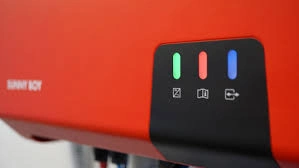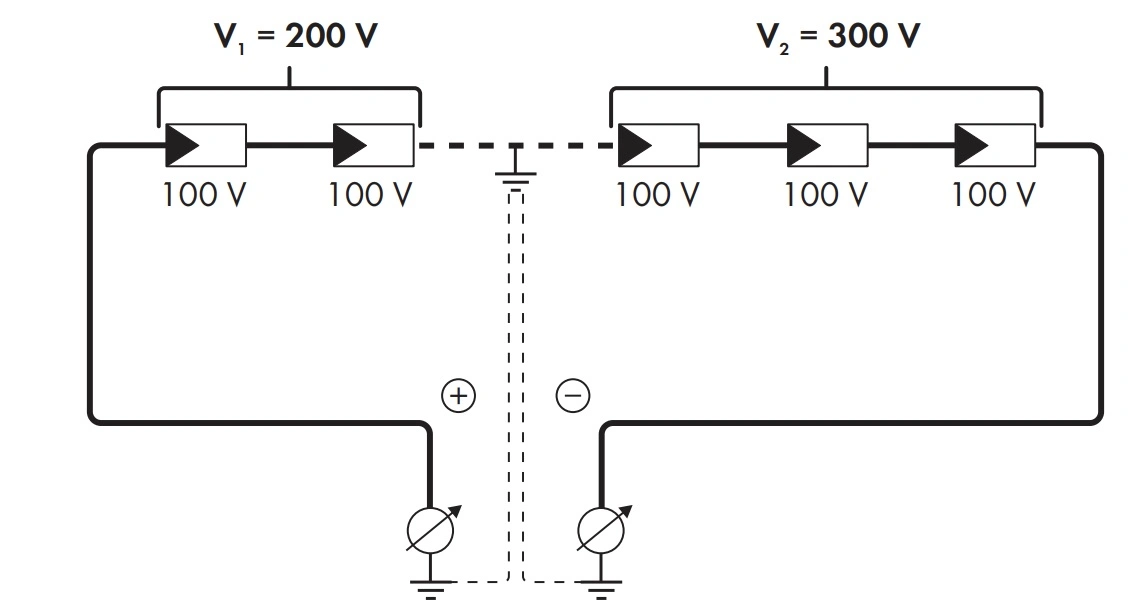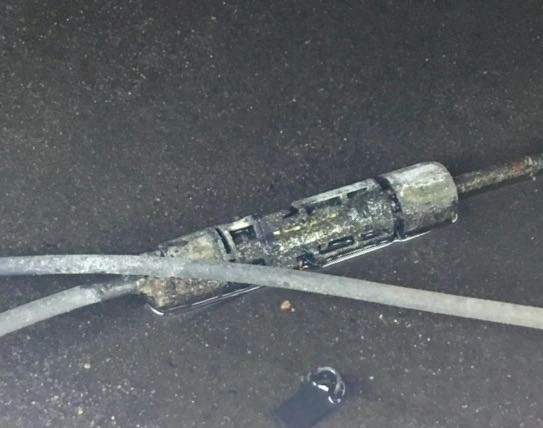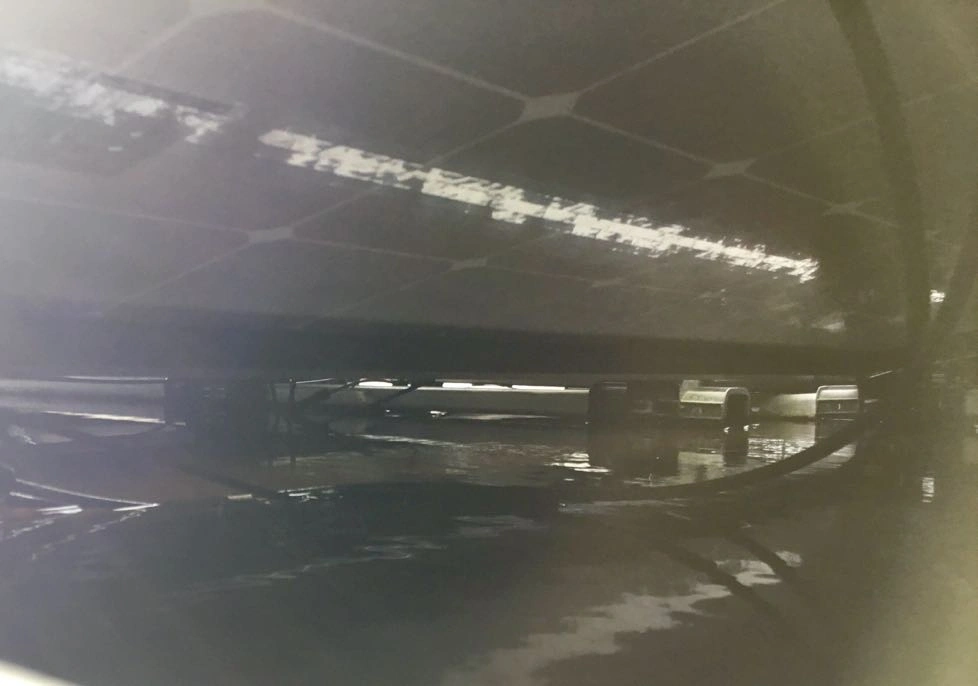
Error message on the inverter display or in the monitoring with a text such as 'Insulation resistance' or 'R-iso'.
Sometimes an error message can appear on the display of the inverter or in the online monitoring with a text such as 'Insulation resistance' or 'R-iso'. Often this message disappears again and everything seems to be fine. What does this message mean and what should we do about it?
In addition to converting direct current (from the solar panels) to alternating current (in the grid), inverters perform a whole range of tasks. One of these is the continuous monitoring of the resistance between the electrical cables on the side of the solar panels and earth. Both the solar panels themselves, and the cables and connectors that connect the panels to each other and to the inverter, are 'double-insulated': that is, there are two layers of insulation material between the live parts and the rest of the world. Thanks to these layers, we never run the risk of receiving an electric shock when we touch a solar panel or a cable.
But as you know, solar panels last a very long time; Zonnefabriek is confident that you will benefit from your installation for at least 25 years, and often much longer. And of course, anything can happen in 25 years. No matter how carefully an installer has worked during installation, and how much attention has been paid to the quality of the products, in exceptional cases, damage can still occur in the insulation layers after years. Fortunately, such damage will not go undetected: the inverter sounds the alarm.
Inverters continuously measure the value of the insulation resistance, in Ohm, or rather: in kilo-Ohm (kΩ, 1 kilo-Ohm = 1000 Ohm). The abbreviation for 'resistance' in physics is R, as in Ohm's law: V = I x R. The inverter gives a message when the measured insulation resistance falls below a certain minimum thershold. The message differs per type of inverter but is usually something like: ‘Insulation error’, ‘Insulation resistance’ or ‘R-iso’. Usually the red LED on the inverter will also light up and it will go into fault mode, and therefore no longer produce power.
(Only old inverters that are equipped with a transformer will not stop producing: these devices do indicate that there is a problem with the insulation resistance, but because there is less risk for the user, they will continue to produce solar power. Nevertheless, the message should trigger some action.)

Usually the red LED on the inverter will also light up and it will go into fault mode, meaning it will no longer produce any power.
If the insulation resistance is too low, we need to find out at precisely what location the problem occurs and bring the insulation back to the correct level. Finding the fault is often the most difficult job: in a string with many solar panels with all the cables and connectors running under the panels and roof tiles, it is sometimes difficult to find. If the fault is constant, it is often possible to determine the location based on a voltage measurement between the ends of the string and the earth. But the tricky thing about 'insulation faults' is that they are often not constant: one moment the message appears and the next day everything seems to be resolved again: how is that possible?

In case of a 'hard' or 'constant' insulation fault, the location can be located using a voltage measurement as shown in this picture
This usually has to do with rain, because many insulation faults are caused by connectors that are lying in water. If a connector is submerged in water for a long time, water can seep in and come into contact with the live cable. Water conducts current, and therefore the insulation resistance will drop below the critical limit and the inverter will go into fault mode. However, as soon as the puddle of water in which the connector lies, dries up again, the resistance will return to the old level and the system starts back up again! This is what makes it hard for the service engineer to find the cause of the problem.

A connector that has been in water for a very long time and has become quite corroded
The best trick to prevent these types of problems is to ensure that the connectors are always lifted up off the roof, especially on flat roofs where there can occasionally be a layer of water. Zonnefabriek uses tie-wraps to tie the connectors to the mounting system, making sure that the tie-wraps are strong and UV-resistant so that they remain in place even after years.
If you ever encounter the message 'insulation error' or 'R-iso', please contact our service department. Even if the message only appears occasionally and disappears by itself, it is better to have everything checked so that you can be sure that everything will continue to work as it should for years to come.

Bottom view of solar panel on flat roof with a layer of water in which cables and connectors hang: this is not how it should be done!